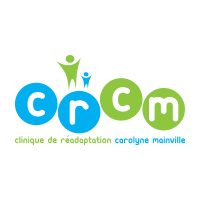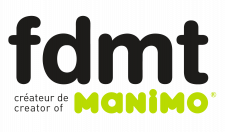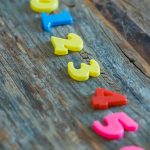The new Nimbly mat has its own user guide with great ideas for working with various purposes, such as recognizing capital letters, numbers, colors and geometric shapes. Our team of occupational therapists wanted to give you even more activity options to practice different skills! Are you ready?
A ton of ideas!
We’ll share different alternatives with you by targeting very specific skills!
Gross Motor Skills: by varying movements, we’ll stimulate coordination, balance and endurance!
• vary the movements of motion by jumping with both feet or on one foot or by imitating different animal walks (such as a frog!)
• take playful steps, such as tiptoeing or heels
• balance on one foot when standing on a lily pad, a letter, or a number
Proximal stability (strengthening of the core and shoulder muscles):
• use a Floor Surfer, a swing or a ball to play the card drawn
Eye-Hand Coordination:
• throw a sand bag or roll a ball over the letter, number or shape you have drawn
Visual Identification and Counting:
• have fun counting the number of turtles, fish, red or blue shapes, etc.
Fine Motor:
• hide tokens or small objects in your hand and carry them, for example, to the letter A or the number 7
• use tweezers and small balls (or pom poms) to identify items on the mat
• trace letters, numbers or shapes or copy them, all while executing alternate positions (for example, on the stomach)

Food Selection – for occupational therapists and nutritionists in the field, here are some ideas:
• draw a card that shows the number of bites to take for X food
• spell the names of foods
• choose a new food to explore that starts with the letter, color, or shape you picked up
• guessing: which food has a round shape / starts with the letter F / is green in color
Variations of Familiar Games
Twister: draw a card, connect it with a part of the body that has to go to the place drawn. For example: “Put your hand on the S. Then put your left foot on the number 1”. This game may seem trivial, but it stimulates a host of motor skills: laterality, dissociation of body parts, proximal stability and more!
Motor Planning – different steps are linked. For example:
• spell a word by jumping with both feet
• then, walk on all the vowels
• afterwards, go over to 5 lily pads
• finish by going to look for objects scattered on the mat by walking on tiptoes
Respecting age groups and mannerisms of certain children
It’s considered optimal that the different concepts discussed with the mat are approached while respecting the following age groups:
It’s also important to lower our requirements for children who are easily visually distracted, have an autism spectrum disorder, or praxic difficulties. The multiple colors, images and visual information on the mat can make visual identification difficult for some children with special needs.
That’s it! You’re now ready to have fun!






Leave A Comment